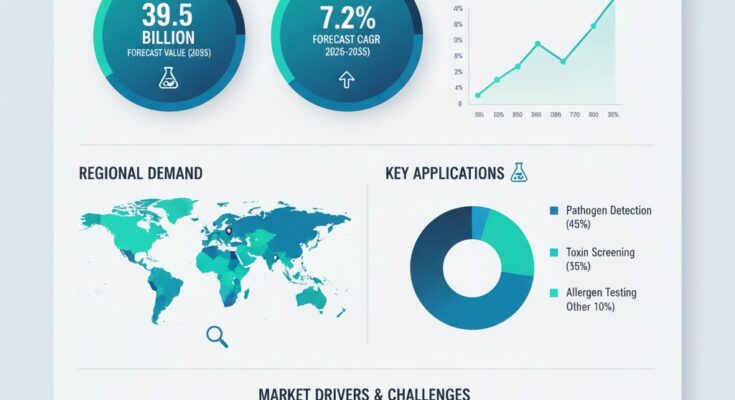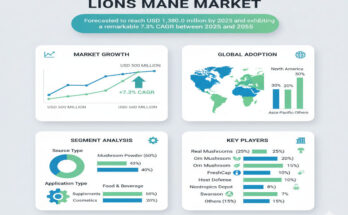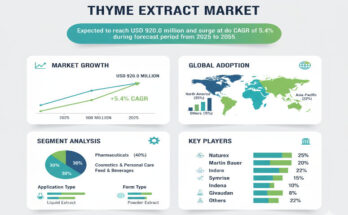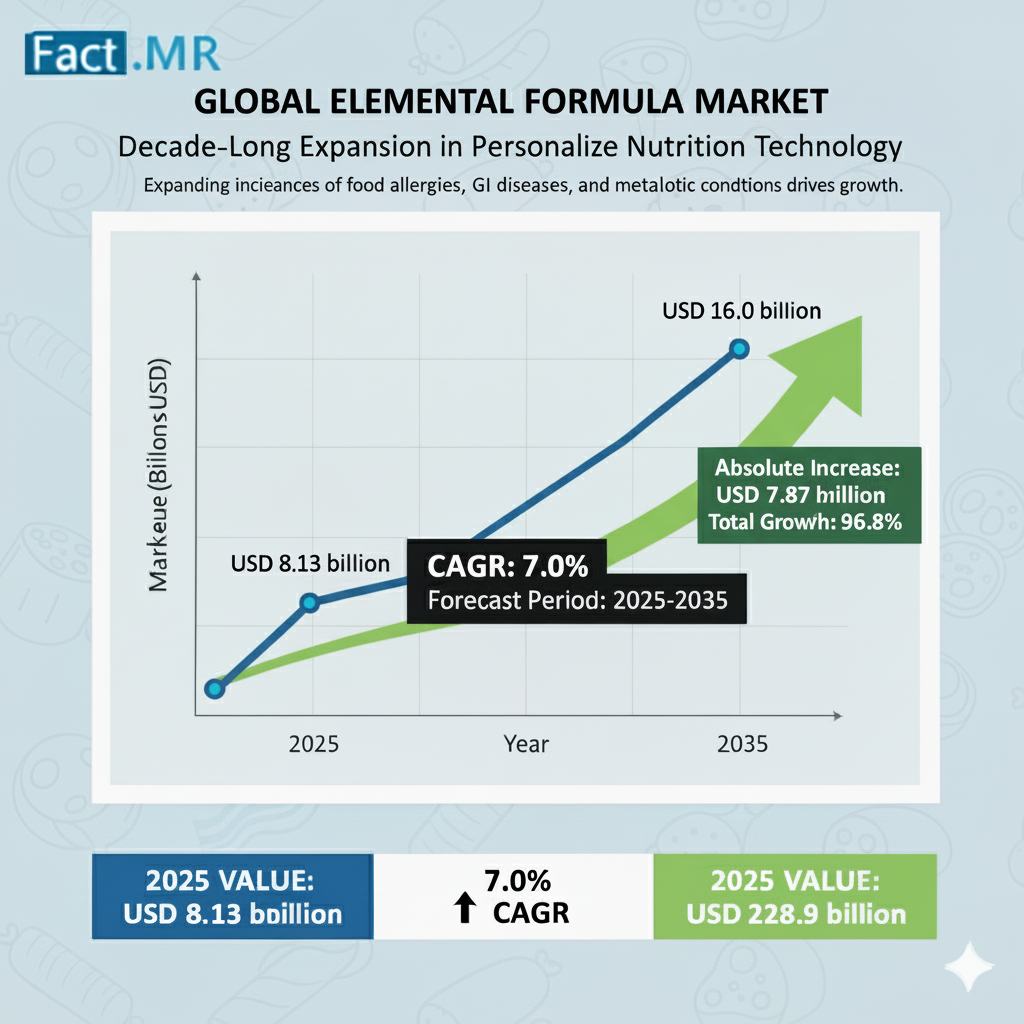The global rapid food safety testing market is set for robust expansion as food producers, regulators, and consumers increasingly prioritize safety assurance, contamination detection, and compliance with stringent global food standards. According to a recent report by Fact.MR, the market is projected to grow from USD 19.7 billion in 2025 to approximately USD 39.5 billion by 2035, recording an absolute increase of USD 18.8 billion over the forecast period. This translates into a total growth of 95.4%, with the market forecast to expand at a compound annual growth rate (CAGR) of 7.2% between 2025 and 2035.
Driving Forces Behind Market Growth
- Rising Incidences of Foodborne Illnesses and Stringent Regulations
The growing frequency of foodborne disease outbreaks has compelled food manufacturers to adopt advanced rapid testing solutions. Regulatory frameworks such as the FDA Food Safety Modernization Act (FSMA), EU General Food Law, and Codex Alimentarius are mandating faster and more accurate testing mechanisms to ensure public health safety. These regulations are accelerating demand for microbial and allergen testing across food processing, packaging, and distribution stages.
- Advancements in Testing Technologies
The rapid evolution of molecular diagnostics, biosensors, and immunoassay-based testing methods is redefining food safety assurance. Technologies such as PCR (Polymerase Chain Reaction), ELISA (Enzyme-Linked Immunosorbent Assay), and biosensor-based detection systems are enabling real-time identification of pathogens, toxins, and chemical contaminants. Integration with AI and IoT-driven platforms allows for predictive analysis, automation, and enhanced traceability across supply chains.
- Expanding Processed and Packaged Food Industry
The surge in consumption of processed, packaged, and ready-to-eat foods is heightening the need for robust safety monitoring. Urbanization, changing dietary habits, and the expansion of cold chain logistics have amplified contamination risks—prompting food producers to invest in continuous, high-throughput testing systems to meet consumer expectations for quality and transparency.
- Increased Global Trade and Export Regulations
Global food exports are subject to rigorous safety checks to meet international trade standards. Rapid testing solutions are becoming critical tools for exporters aiming to comply with diverse regional regulatory frameworks, reduce inspection delays, and minimize product recalls. This trend is particularly strong in regions exporting meat, seafood, dairy, and agricultural produce.
Strategic Market Drivers:
Technological Integration and Automation
Automation in rapid testing has reduced dependency on manual processes, enhancing speed and accuracy. The adoption of lab-on-a-chip, microfluidics, and portable testing kits is expanding accessibility for both large-scale manufacturers and small food processors.
Consumer-driven Transparency and Traceability
Modern consumers are increasingly aware of food safety and traceability. Digital transformation initiatives—such as blockchain-based tracking and data-driven testing platforms—are helping brands strengthen consumer trust and comply with clean-label and sustainability commitments.
R&D in Multi-pathogen Detection Systems
Ongoing research into multiplex testing platforms that simultaneously detect multiple pathogens and contaminants is paving the way for cost-effective and efficient testing solutions. This innovation is expected to revolutionize the market landscape over the next decade.
Regional Growth Highlights
North America: Leadership in Regulatory Compliance and Technology Adoption
North America dominates the rapid food safety testing market due to stringent FDA and USDA regulations, high awareness levels, and advanced laboratory infrastructure. The U.S. leads in the adoption of molecular testing technologies, supported by strong R&D investments from industry leaders and academic institutions.
Europe: Sustainability and Safety as Market Pillars
Europe’s emphasis on sustainable food production and consumer health is fueling rapid adoption of innovative testing techniques. Countries such as Germany, France, and the U.K. are pioneering in the use of biosensors and AI-integrated systems to ensure compliance with the European Food Safety Authority (EFSA) directives.
East Asia: Fastest-growing Market with Rising Food Exports
East Asia is emerging as the fastest-growing region, driven by surging food exports from China, Japan, and South Korea. Government-led initiatives to modernize food safety infrastructure and increase traceability are creating lucrative opportunities for testing solution providers.
Emerging Markets: Latin America and the Middle East & Africa
Increasing food trade, urbanization, and consumer awareness are driving demand for rapid testing technologies in emerging economies. Governments are investing in food inspection systems to align with global standards, fostering growth in the testing and certification sectors.
Market Segmentation Insights
By Technology:
- PCR-based Testing
- Immunoassay-based Testing
- Biosensor-based Testing
- Chromatography & Spectroscopy
- Others
By Contaminant Type:
- Pathogens (Salmonella, E. coli, Listeria, etc.)
- Toxins
- Pesticides & Chemicals
- Allergens
- GMOs
By Food Type:
- Meat, Poultry, and Seafood
- Dairy Products
- Processed Foods
- Fruits & Vegetables
- Cereals & Grains
By End Use:
- Food Manufacturers
- Testing Laboratories
- Research Institutes
- Retailers and Distributors
Competitive Landscape
The rapid food safety testing market is characterized by technological innovation, mergers and acquisitions, and strategic collaborations. Leading players are expanding portfolios to include digital diagnostics and real-time monitoring systems.
Key Players in the Rapid Food Safety Testing Market:
- Thermo Fisher Scientific
- Bio-Rad Laboratories
- Merck KGaA
- Neogen Corporation
- 3M
- Eurofins Scientific
- SGS SA
- Charles River Laboratories
- IDEXX Laboratories
- PerkinElmer
These companies are focusing on next-generation diagnostic platforms, integrating automation and AI analytics to reduce testing time and improve reliability. Strategic collaborations with food producers and regulatory bodies are enhancing global standardization and compliance.
Maufracture’s Strategic Positioning
Maufracture aims to capitalize on the rising demand for rapid, reliable, and automated food safety testing through:
- Technological Leadership: Investing in biosensor-based and PCR-integrated rapid testing solutions with AI-enabled analytics.
- Global Expansion: Strengthening market presence in North America and East Asia while expanding partnerships in Europe and Latin America.
- Sustainability and Compliance: Incorporating eco-efficient processes that align with green testing standards and reduce environmental footprint.
- Collaborative Innovation: Partnering with research institutions and food producers to develop customized, real-time contamination detection systems.
Future Outlook: Toward Safer, Smarter Food Systems
As global food chains grow more complex, rapid food safety testing will play an indispensable role in ensuring public health, brand integrity, and regulatory compliance. The next decade will witness a surge in demand for portable, digital, and AI-powered diagnostic solutions capable of delivering instant, lab-grade accuracy.
Manufacturers that blend innovation, automation, and sustainability will define the future of food safety. With a strong foundation in R&D, global partnerships, and customer-focused solutions, Maufracture is poised to drive the next era of food safety innovation—building a smarter, safer, and more transparent global food ecosystem.



